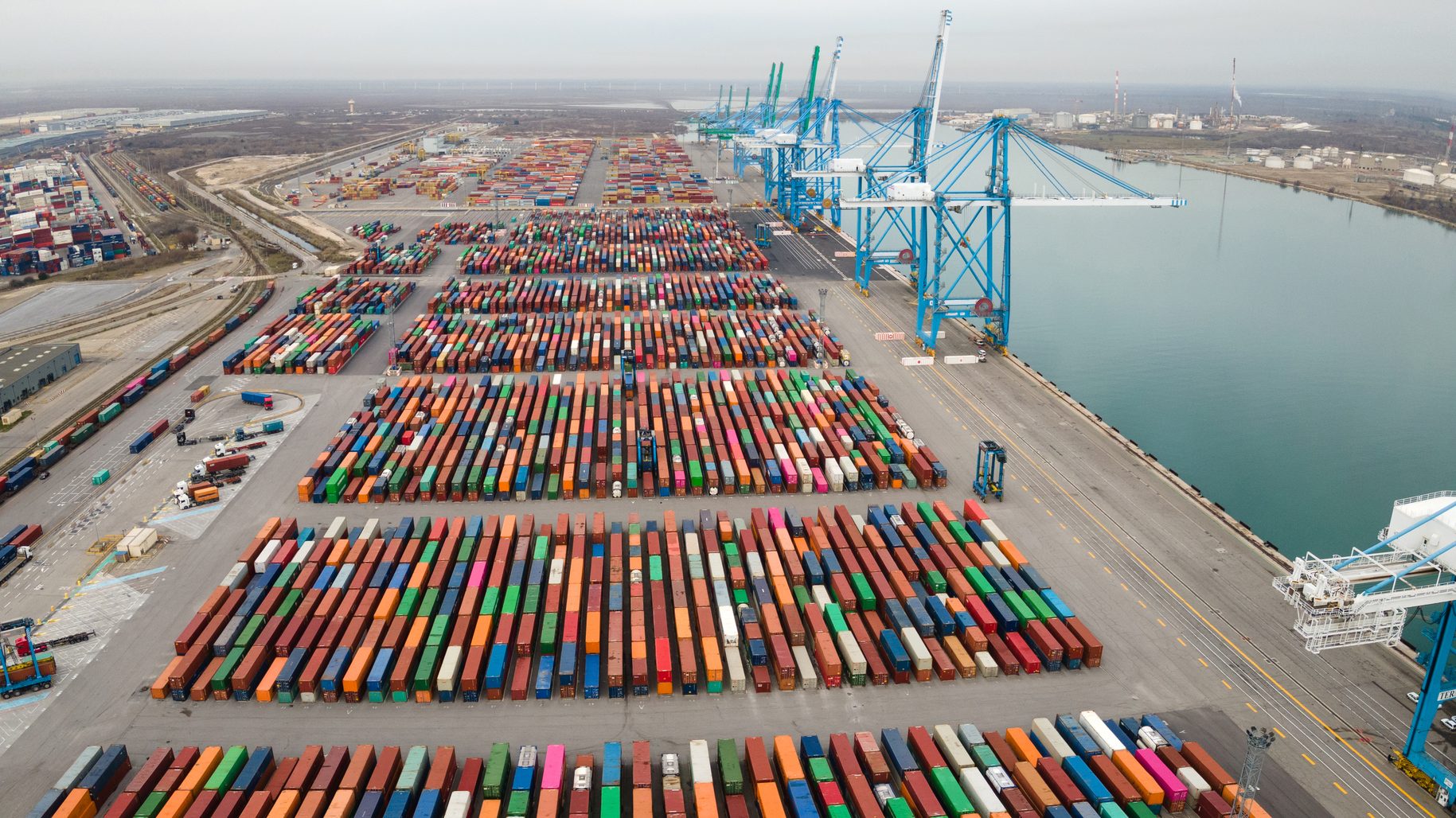
Learn how pressure on the global supply chain is affecting retailers, plus four other data-driven predictions on how the holiday shopping season is about to be transformed.
Consumers aren’t the only ones feeling squeezed by inflation.
U.S. retailers will face an extra $223 billion in costs of goods sold this holiday season, Salesforce predicts, which include year-over-year jumps in the costs of freight, manufacturing, and labor. The prediction is based on proprietary research, data on the actual activity of more than 1 billion global shoppers, and several market assumptions.
The expected price hikes come as the global consumer economy is undergoing a digital transformation. The pandemic has accelerated the adoption of digital shopping — and this momentum will remain strong as the retail industry sets its sights on the 2021 holiday season.
The rapid pace of change has exposed cracks in the global economy and supply chain. Raw material shortages, logistics barriers, and challenges in the labor market, in which workers fight for better pay and the digital economy uproots traditional roles, have put a strain on retail operations and, consequently, on consumer shopping experiences.
What do all these dynamics mean for the second half of the year, and especially the holiday shopping season? Read on for our top five predictions.
The 2021 holiday shopping season calls for 2021 strategies
Are you ready? Discover the tactics you need to succeed.
GET THE NEW HOLIDAY RETAIL PLANNING GUIDE >
But first, a bit of background…
To better understand what’s poised to happen this holiday shopping season, let’s look at findings from Salesforce’s second-quarter Shopping Index. Q2 2021 is an important quarter because it’s the first in which a year-over-year comparison post-dates the start of the pandemic. After four quarters of massive digital shopping growth, Q2 spending growth came back to Earth with a modest increase of 3% year-over-year. Despite traffic growing at 8% — on top of the significant jump last year — customers simply spent less online as physical stores began to re-open.
A key factor impacting buying behavior online and in person is inflation, which has accelerated rapidly in recent months. June, in particular, saw a 5.4% consumer-price increase across all spending categories. The cost for goods from suppliers also continued to outpace consumer pricing. The Producer Price Index grew 7.3% in June, indicating that we are likely set up for more inflation in the coming months. While this is a sharp overall increase, Salesforce’s data shows that the consumer price increases may be even higher in retail.
In fact, according to our Shopping Index data, the Average Selling Price (ASP) for merchandise in discretionary categories, such as apparel, footwear, and furniture, spiked by 11% over Q2 2020. This is by far the largest increase we have seen in our data. Average Order Value (AOV) was up 17% year-over-year, while the number of units consumers purchased decreased by 1%, compared to a 6% increase over the same period last year.
Simply put, consumers are spending more on fewer items.
Simply put, consumers are spending more on fewer items. As retailers fight for wallet share among experiential categories such as travel, entertainment, and dining, the value of the dollar is becoming even more strained.
Consumers face rising prices across all sectors of the economy, which may impact consumer confidence over time. For this holiday season, though, we anticipate strong demand as consumers emerge from the pandemic and shift their spending from needs to wants.
Prediction #1: Consumers, retailers, and suppliers will bear the burden of rising costs
Retailers should plan for three key forces that will exert pressure on the global supply chain for the remainder of the year: manufacturing capacity, logistics costs, and the labor shortage.
Manufacturing
There’s an inventory crisis and it’s been looming since 2020. Manufacturing shutdowns in Asia in early 2020 set off a ripple effect throughout the industry as raw materials became scarce and manufacturing stopped. The global supply chain is not out of the woods yet. Factories continue to be at risk of closing and many retailers are desperately seeking alternative plans to produce merchandise. We predict that these challenges will force retailers to pay suppliers $12 billion more than they did over the same period in 2020.
Logistics
The challenges don’t stop once the product leaves the factory floor. The global shipping process is being slowed not just by delays, but also by steep prices. While Home Depot is renting its own cargo ships and Walmart is pre-buying containers, this is not realistic for most brands and retailers. Container prices and capacity, along with labor issues, is causing a glut at the ports that is adding costs and lead time to inbound shipments. We predict U.S. companies will spend $163 billion more on ocean freight in the second half of 2021 than they did in the second half of 2020, roughly tripling their costs from the same period last year. With prices this high, we expect that some larger companies will turn to air freight as an alternative.

Labor
Have you seen any “help wanted” signs lately? They are popping up everywhere as businesses reopen. Labor demand outstripping supply isn’t just plaguing small towns in rural America. It’s a global issue. Large retailers have responded by voluntarily raising hourly wages to higher than legal requirements and offering extra incentives to entice more applicants. With an imminent shopping spree kicking off during back-to-school season, we anticipate that the retail industry will continue to spend more on wages to ensure staffing well into the holiday season. We estimate that U.S. brands and retailers will spend $47 billion in additional wages for store associates in November and December compared to the same period in 2020.
In total, we predict that the retail industry will see an additional $223 billion in the cost of goods sold this holiday season. While we forecast that year-over-year consumer prices will continue to rise by an additional 8% to 10% each quarter, suppliers and retailers should plan for incremental margin hits with inflationary pressures.
Prediction #2: The role of the store associate will be reimagined
The role of the store associate has fundamentally changed during the pandemic — no longer are they merely responsible for store operations and checkout. Their purview has broadened to:
- Fulfillment experts: picking and packing online orders
- Customer service agents: providing service, advice, and clienteling — in store and at home
- Ecommerce specialists: enabling an endless aisle for customers that did enter the store
- Social media managers: becoming brand advocates within their personal networks
As parts of the world reopen, the continued blurring between the physical and digital experiences opens the possibility to redefine the associate’s role. This marriage brings greater opportunity for job satisfaction, upward mobility, and unique experiences for career development.
The “real” minimum wage will be set by companies and workers, not legislation
While store associate roles are becoming more attractive, we anticipate that the U.S. retail industry will have a labor shortage of approximately 350,000 workers heading into the November and December peak period. What’s driving the gap? Many workers are holding out for or leaving for higher wages, while extended unemployment benefits in some states and the gig economy have also had an impact.
Larger retail organizations are proactively responding to the labor crisis, publicizing their move to $15 an hour.
We project that the median hourly pay for store associates will hit $19 per hour, up from $13.02 per hour in 2020.
We predict that this shift to $15 per hour for store associates will continue into the holidays regardless of retailer size. Furthermore, we project that the median hourly pay for store associates will hit $19 per hour (up from $13.02 per hour in 2020) in the same timeframe. This means that U.S. retailers will, on average, spend an extra $3,000 per store associate between November and December. This strikes another blow to smaller retailers who are already struggling to hold on.
Prediction #3: Prepare for a Christmas without cookies
With global legislation and changing consumer preferences giving way to a new internet, marketing departments are facing the greatest disruption in the last five years. Consumer privacy and trust has prompted tech giants such as Google and Apple to proactively phase out cookies and ad tracking before looming deadlines. This means that tracking user activity through third-party data across the web and mobile applications will become more expensive, if not impossible. But where there is a challenge, there is opportunity. This has turned first-party data — the data that organizations collect and manage on their consumers — into gold. Here are three main opportunities this holiday season in the battle for first-party data.
Loyalty programs
Loyalty programs not only reward customers. They are also an effective method to collect data on preferences and habits in this new cookie-less world. While programs are designed to increase customer lifetime value through personalized and relevant engagement, they could also create a lot more noise. We predict that:
- Loyalty programs will increase by over 1,000 new programs in the US over the next 6 months.
- The share of online orders redeeming loyalty points will increase by 76% in November and December.
- 50% of new loyalty signups are at risk of going dark after December.
How organizations leverage this new access to first-party data will be critical in maintaining the relationship with their customers during the holiday season and beyond.
Social media
Social media will become increasingly important in this cookie-less internet, but it’s not social advertising that will be the winner. Organic social engagement will be critical to cultivate a dialogue with your audience in the absence of targeted advertising. We predict online traffic to ecommerce sites from social referrals will grow by 30% this holiday season. Influencer marketing will also see renewed importance. We predict that the total U.S. digital ad spend on social media influencer content will grow to $6 billion this November and December, representing 20% of all digital ad spend.
We predict total U.S. digital ad spend on social media influencer content will grow to $6B this November and December.
Personalized email marketing
With retailers doubling down on first-party data, we will also see a renewed enthusiasm around email marketing. Cultivating and maintaining email lists is just one piece of the puzzle. We predict that consumers will see an 18% increase in marketing emails from brands and retailers this November and December (compared to a 6% decrease over the same time period in prior years). That’s a lot of spam if not managed well. How do we prevent unsubscribes? Intelligent email segmentation to drive the right message at the right time — powered by artificial intelligence — will be critical to keep email lists healthy and marketing teams delivering personalized messages at scale.
Prediction #4: Digital shopping season will extend beyond cyber week — again
With shipping delays and a rescheduled Amazon Prime Day, the 2020 holiday calendar changed radically. Online shopping was no longer concentrated in the confines of Cyber Week. Shoppers turned to digital in early November to bypass inventory challenges and relied on digital in the final days of the season to check store inventory and coordinate their store pick-ups. We don’t anticipate the calendar snapping back to normal this year. Here are the three critical windows that retailers should plan for this holiday shopping season:
- July and August: Back-to-school and back-to-work will trigger the start of the 2021 holiday shopping season. With the majority of schools and offices across the globe reopening for the first time in nearly 18 months, consumers will be looking to revamp their wardrobes and upgrade their dorm rooms.
- Early November: The global supply chain is still struggling to catch up from an unprecedented bullwhip effect. With inventory scarcity and rising prices, we anticipate that consumers will come out early again this year.
- Late December: Buy-online/pick-up-in-store (BOPIS) and curbside options have changed the game for online shopping. Now able to bypass the traditional carriers when needed, consumers can continue to shop online well past the shipping cutoffs. Last year, in the five days leading up to Christmas, retailers offering curbside, drive-through, and in-store pickup options saw online spending grow 54%, compared to 34% growth for those that didn’t. In light of sustained inventory and last-mile fulfillment challenges continuing in 2021, we predict that BOPIS and curbside will continue to impact end-of-season digital shopping.
Prediction #5: Consumers will splurge on experiential categories
Lifestyle changes generated a need for products that made it easier and more comfortable to work from home. But as parts of the world begin the transition to post-pandemic life, our spending needs will transform again. No longer will consumers be buying just what they need (online grocery, furniture, and office supplies). They will now be focusing on what they want. Here are the three spending categories that we predict will grow the most this holiday season:
- Adventure: As travel begins to resume in some parts of the world, consumers will be splurging on goods and services that cater to travel and adventure. Why adventure? Epic experiences will upend the normal pre-pandemic vacation as many consumers emerge from their homes after nearly a year and a half. Luggage, sporting goods, outdoor, and vacation-wear will all be big categories this holiday season.
- Social: With weddings and parties finally getting back on the calendar, we predict that goods and services that bring people together will also be another hot category for the remainder of the year. Party supplies, home dining supplies, and products that make hosting an incredible party will all be in high demand.
- Luxury: As we all head back out into the world, consumers will be looking to revamp their wardrobes. But not with just anything. Investment pieces that can be shown off will not only be a way for consumers to come out of the pandemic in style, but as inflation concerns grow, luxury goods will be an attractive option for consumers looking to turn liquidity into goods with value.
Despite the global economy working to overcome the growing pains of rapid digital transformation, we anticipate that consumer demand will still result in another record holiday season this year.
Prepare for another unprecedented holiday shopping season
Retailers and brands can’t just follow the same playbook as last year. 2021 requires a new approach.
GET THE NEW HOLIDAY RETAIL PLANNING GUIDE >
Methodology
Powered by Commerce Cloud, the Q2 Shopping Index uncovers the true shopping story by analyzing the activity and online shopping statistics of more than 1 billion shoppers across more than 51 countries, with a focus on 12 key markets: the U.S., Canada, U.K., Germany, France, Italy, Spain, Japan, the Netherlands, Australia/New Zealand, the Asia-Pacific (excluding Japan, Australia, and New Zealand), and the Nordics. This battery of benchmarks provides a deep look into the last nine quarters and the current state of digital commerce. Several factors are applied to extrapolate macroeconomic figures for the broader retail industry, and these results are not indicative of Salesforce performance.
The prediction data that we present is from proprietary Salesforce research. The calculations we use blend first-party and third-party data, as well as several market assumptions, to generate the data points we present.
Reference: https://www.salesforce.com/blog/holiday-shopping-predictions/







